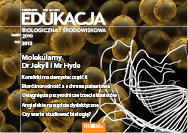Komórki macierzyste. Część II – pluripotencjalne komórki macierzyste
Stem cells. Part II – pluripotent stem cells
Author(s): Barbara Świerczek, Damian Dudka, Karolina ArchackaSubject(s): Health and medicine and law, Demography and human biology
Published by: Instytut Badań Edukacyjnych
Keywords: Pluripotent stem cells; ES cells; iPS cells; reprogramming; multidirectional differentiation; regenerative medicine; cell therapies;
Summary/Abstract: Pluripotent stem cells are able to differentiate into all types of cells and tissues buliding mammalian organism. During embryo development pluripotent cells are localized in the inner cell mass of blastocyst, which serves as a source of cells for embryo body formation. Pluripotent cells building inner cell mass can be isolated and propagated in vitro as embryonic stem cells (ES cells). Another type of pluripotent stem cells, i.e. induced pluripotent stem cells (iPS cells), is derived as a result of the process called cell reprogramming. Both ES cells and iPS cells serve as a valuable research tool. They could also be used as a potential source of cells for transplantation in regenerative medicine. Derivation of both ES and iPS cells is considered as a real breakthrough in science and medicine, and was distinguished by the Nobel Prize in physiology or medicine. In 2007 Mario Capecchi, Olivier Smithies, and Martin Evans were awarded for development of methods which enabled derivation of ES cells and genetic modification of mice, while in 2012 John Gurdon and Shinya Yamanaka were awarded for research focused on cell reprogramming.
Journal: Edukacja Biologiczna i Środowiskowa
- Issue Year: 2013
- Issue No: 2
- Page Range: 3-11
- Page Count: 9
- Language: Polish
- Content File-PDF

